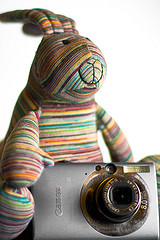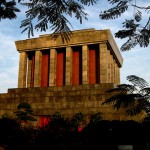
One of the first pieces advice I give to people who wonder where to start getting their photos to become better, is to shoot in RAW. There’s many obvious reasons for why this is a good idea.
With RAW, the final result can be sharper, you have better control over white balance, you get wider dynamic range, you can do HDR photography, and, well, it’s what all the cool kids done. Recently, however, I have moved away from shooting in RAW for several reasons. Or, to be precise, I have started shooting in RAW+JPG.
Here are some compelling arguments for why you should do the same…
Becoming a better photographer
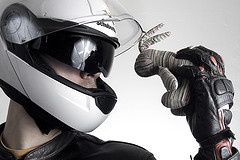
Holding a bunny to your face while wearing full Motorcycle protective gear is a great way to become a better photographer. Aw, c'mon, give me a break, what would YOU use to illustrate this article? (clicky for bigger)
RAW is great because it is lenient – you can over-expose a photo quite significantly, and still rescue the highlights, because you have significantly higher bit-depth (and more information) than you would do with JPGs.
This is a life-saver for press, event, and action photographers: The fact that you aren’t completely buggered even if you’ve screwed up the exposure a fraction is a godsent!
The problem is that I’ve recently talked to a lot of photographer of the ‘new garde’. People who have rarely – or never – shot on film, and are unaware of how often RAW is helping them out of a hole. There’s two ways of looking at this: Either, use the extra flexibility RAW gives you on a regular basis, and accept that we’re now in the digital age. Or shoot as if you’re still shooting on film, and use the extra flexibility as a safety buffer.
I’m a strong believer in the latter: Ultimately, when you present your photos, you have to save them as 8-bit colour anyway, so you’re in fact re-compressing the image back into a lower bit depth. This isn’t a bad thing: the human eye can’t really cope with more than 8 bits anyway.
The problem is that it’s difficult to estimate how much of the photo is over-exposed when you’re relying on RAW to save you – and there will come a day where you are relying on it, and you’re off. There’s only so much recovery you can do of a photograph, and if you miscalculate, you don’t have a safety buffer anymore.
Personally, I’ve become a huge fan of trying to take perfect exposures out of the camera: Shoot as if the JPEG is your film. Get the white balance right. Get the exposure right. Sharpen the JPG in-camera. Set the saturation and contrast you like. In short; Make your JPEGs be as perfect straight out of the camera as possible. In addition to making you a much better and more conscious photographer, this has several benefits. To wit:
Better previews
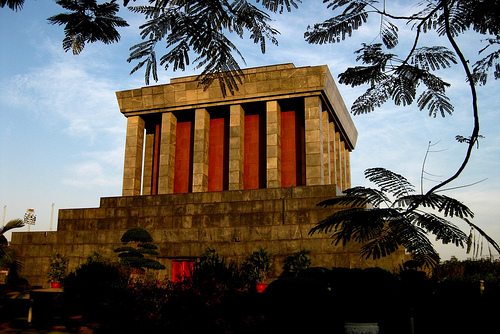
Getting the white balance right on shots like this is challenging, but hellasatisfying. It's good to know you can fall back on RAW if you did make a hash of it after all (clicky for bigger)
RAW photos are unsharpened out of the camera. This is a blessing, because as we discussed in the article on how you can sharpen your photos, you should never sharpen your photos twice. Your JPGs are sharpened in-camera, which means that if you sharpen them on your computer, you’re not getting as high quality as you could. Not a good thing.
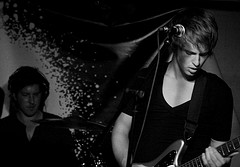
In situations where you're taking lots of photos (like when snapping gigs), it's a relief to have JPG preview - it saves you from opening hundreds (or even thousands) of RAW files to find out which ones turned out well.
The flopside of this, however, is that RAW photos can look flat and lack energy. The photos that really zing are the ones that are tack-sharp – and if you’re only looking at RAW photos, you may actually miss the photo that is sharpest, because it hasn’t been sharpened to its full potential.
When you shoot RAW+JPG and your JPEGs are perfectly exposed and whitebalanced, they are the ultimate previewing tool: Full resolution previews, beautifully sharp, which your computer can deal with very quickly. Even better, if you need to e-mail or upload previews of a shoot anywhere, it’s an order of magnitude faster to resize and compress JPGs than RAW files.
So, Shoot with JPG, keep them, and use them for previewing purposes. If you decide to edit any of ‘em, use the RAW files, but at least you’ll have a much better picture (har har) of the potential of your photos
Submitting photos to magazines
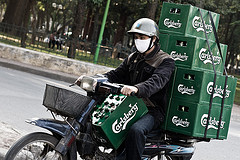
Enough with the useful captions already. Here's a picture of a guy in Vietnam with 10 (yes! Ten!) cases of beer on his motorbike. (clicky for bigger)
So you occasionally shoot paperazzi stuff? You do events? You shoot news? Honestly, you don’t want to piss off the picture editors: if you send them a photo they’ll have to do a lot of work on, you’ll need to have a damn fine explanation… And find yourself some other customers, because they won’t use you again.
They’re on extremely tight deadlines, and they prefer photos they can just drop into their page layouts without fiddling with them too much. Shoot perfect JPGs, and that’s usually good enough for magazine use.
Let them know that you have a RAW file if they need it, of course, but 99 times out of a hundred and twenty two, they won’t want it – they don’t need the hassle.
Workflow speed
My university professor stole a wise saying from someone else once: Work smarter, not harder. This saying really is eminently applicable here.
I don’t care how fast your computer is – RAW will slow you down in one way or another. If you organise your photos so you can preview the JPGs, you’re making your life a lot easier.
If the JPG looks out of focus, the RAW will be too – that’ll save you a few seconds opening the RAW file to check. Multiply that by 300 photos, and you’ve saved yourself 10 minutes. Presto!
There’s no reason not to
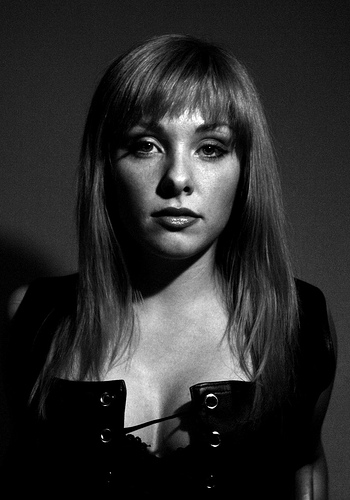
This model wants you to shoot RAW+JPG. Just look at how stern she looks. Would you dare not to? Thought so. Grab your camera right now and change your settings. (clicky for bigger)
Set your camera to RAW+JPG, and bring plenty of memory cards. They cost next to nothing these days, and if you do a shoot where you know you don’t need to keep the JPGs, you can always trash them after you’ve downloaded them – sort ‘em by size (the RAW files tend to be 3-4 times bigger than the JPGs) and delete half the smallest files. Or sort ‘em by type and delete all the JPGs. Whatever you prefer.
If you have enough memory cards (and you should. Really. If you don’t, head over to Amazon and be Amazed (groan) at how cheap they are), there really is no reason not to shoot in RAW+JPG.
Go on. Give it a shot. And let me know how much time you’re saving :-)
Do you enjoy a smattering of random photography links? Well, squire, I welcome thee to join me on Twitter - Follow @Photocritic
© Kamps Consulting Ltd. This article is licenced for use on Pixiq only. Please do not reproduce wholly or in part without a license. More info.

